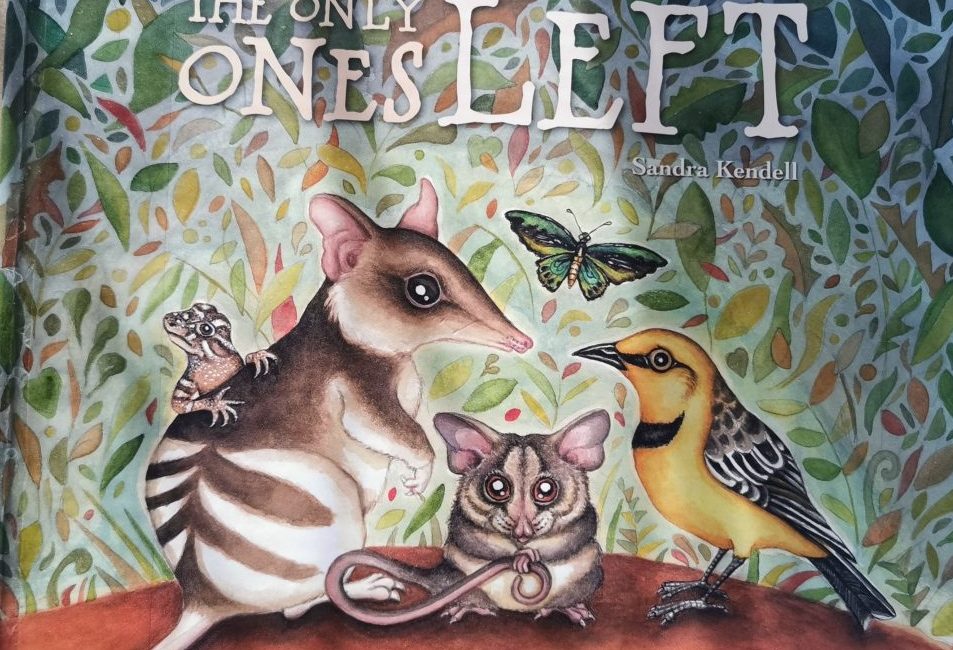
In this turmoil filled time, when the apocalyptic predictions of climate change consequences are raining all around us, what message are we leaving for future generations, except a scene of hopeless scrambling around to piece together a solution, with burnt or soggy pieces that don’t fall in place to create a pretty picture in the end?
A steep change in mindset is required to overcome this hurdle. Books are perfect to plant messages of hope in young minds and steer them towards a better path.

In the picture book The Only Ones Left, Sandra Kendell uses sparse text with vivid illustrations to aid in this shift of consciousness. Her artwork speaks a thousand words. Throughout the book, a myriad of native Australian animals are pictured, vibrantly coloured on a white background, emphasizing each animals importance in the environment, whether small or big, shy or ferocious.
Kendell asks very important questions,
‘But what if we were the only ones left? But what if we refuse to share? But what if we keep taking and taking for ourselves?
The pages follow two children cutting up the greens and dirtying the blues -a powerful metaphor for our casual habit of taking over green spaces without a thought for the numerous inhabitants of that bustling space and the uninhibited use of the oceans depths as a waste basket with no end.
The children pack up all the colours into boxes, including the radiant yellow of the sun. Extinct Australian animals are pictured in a deep sapphire night sky, with stars for company and swathed in an ethereal glow.
When the children have packed every single stunning colour into the bland cardboard boxes, the page is murky brown – a stark reminder of the waste land we might inherit if we do not change our ways.

The narrative ends with a simple message – SHARE – in an exquisite spread where the human and animal worlds collide. There are notes at the end where Kendell explains that each and every creature has a role in the environment. She shares the history of many native Australian animals who have had to compete with introduced species and deal with the pressures of changing habitats.
Kendell also explains the plight of a handful of Australian animal, birds and reptiles which are on the threat of extinction and the conservation activities that are already in place for them.
This is not a book of hopelessness, but one that asks the question ‘What if’ and ends on a note of hope that if we share and take care, all will be right.

Suggested age: Read aloud to 3+. Read by self 5+. Recommended for a beginner reader.
Published by Windy Hollow Books, 2018
If you would like this book for your child’s bookshelf, check out your local book shops, because bookshops are amazing places and should be supported to keep them open! However, the convenience of clicking from your comfy sofa is sometimes a necessity. In that case, Booktopia it!
This post contains affiliate links.
